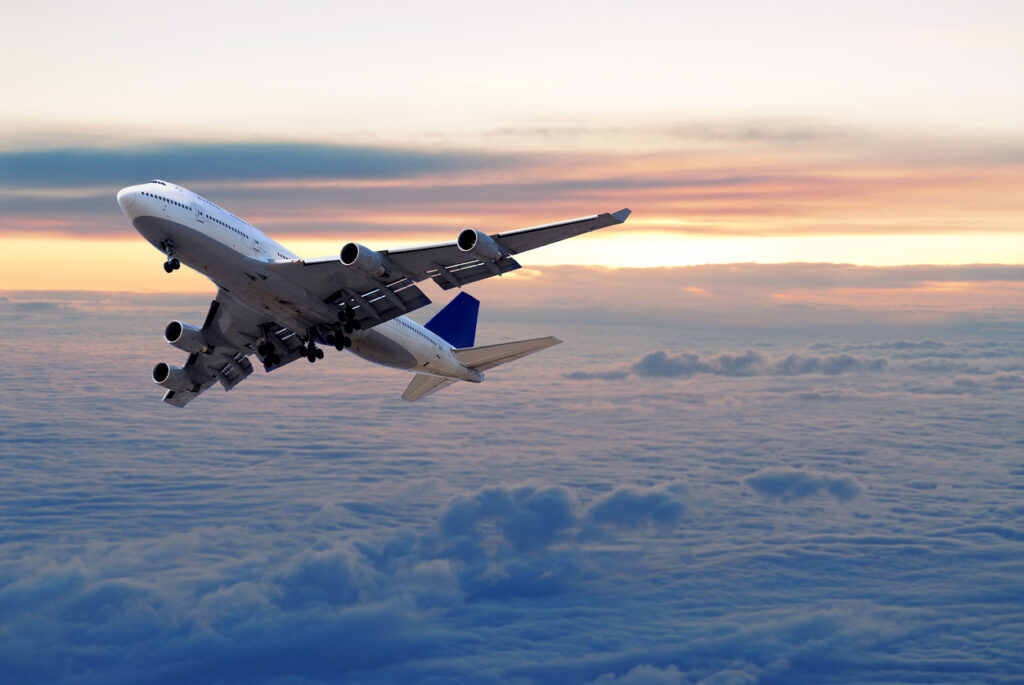Norden Leacox Accident & Injury Law | June 27, 2025 | Car Accident Lawyer Near Orlando Florida

When deciding how to travel—especially long distances—many people ask the same question: Is flying safer than driving? It’s a common fear to feel uneasy about flying, but what do the facts say? If you’ve ever hesitated to get on a plane because it feels dangerous, you’re not alone. However, air travel is actually one of the safest ways to get around. In this article, we’ll compare flying and driving and explain why one may be safer than the other.
The Numbers: Plane Crashes vs. Car Accidents
Let’s start by looking at the numbers. Every year in the United States, over 6 million car accidents happen. These crashes cause about 40,000 deaths and 2 million injuries yearly. Most of these accidents are caused by human error, such as speeding, distracted driving, or driving under the influence.
In comparison, commercial airline accidents are extremely rare. In fact, the odds of dying in a plane crash are about 1 in 11 million, while the odds of dying in a car crash are about 1 in 5,000. That’s a huge difference. The data shows that flying is far less likely to result in injury or death.
Even though plane crashes do happen, they are very rare and usually get a lot of media attention—making them seem more common than they really are. In short, while car accidents happen daily, plane crashes are incredibly rare.
Safety Measures in Aviation
Air travel is heavily regulated by the Federal Aviation Administration (FAA). Every commercial airline must follow strict safety rules. Planes are regularly inspected, pilots are highly trained, and aircraft are built to handle extreme weather and emergencies. Before each flight, crews perform detailed safety checks.
Pilots go through simulators and continuous training to stay up to date. Air traffic controllers help guide planes safely from takeoff to landing. These layers of protection make flying one of the safest transportation methods. Commercial airlines also invest millions of dollars in safety upgrades.
When something goes wrong on a flight, the National Transportation Safety Board (NTSB) investigates and recommends changes to prevent future issues. With all these safety systems in place, it’s no surprise that modern air travel is extremely secure.
Why Driving Is Riskier
Most people drive every day and don’t think much about it. However, being behind the wheel is actually one of the most dangerous things we do. Unlike flying, driving is not managed by a professional crew or guided by a tower. Drivers are often tired, distracted, or speeding—and roads can be slippery, crowded, or under construction.
In Florida, for example, car accidents are one of the leading causes of injuries. Bad weather, heavy traffic, and tourists unfamiliar with local roads all increase the risk of a crash. Texting while driving, drunk driving, and running red lights also lead to thousands of avoidable accidents each year.
Because driving is so common, we sometimes forget how risky it can be. But the truth is, it’s much easier to be injured or killed in a car than on a plane. So, while flying might feel scary, driving carries a much higher real-life danger.
Common Fears About Flying
Many people fear flying because they feel out of control. You can’t see the pilot, you can’t steer the plane, and you’re high above the ground. Turbulence (bumpy air) can also make passengers feel nervous. But it’s important to remember that pilots are trained to handle all of this.
Turbulence is normal and rarely dangerous. Planes are built to withstand it, and modern aircraft have systems to avoid rough weather when possible. It may feel strange to trust a machine and a crew you don’t know, but the systems in place are designed to keep everyone safe. So even though flying can feel risky, it’s actually very safe due to the training, rules, and technology involved.
Contact an Orlando Car Accident Lawyer at Norden Leacox Accident & Injury Law Today
For more information, please contact Norden Leacox Accident & Injury Law to schedule a free consultation. We have five convenient locations in Florida, including Orlando, Palm Bay, Melbourne, Cocoa, and Titusville.
Norden Leacox Accident & Injury Law – Orlando, FL Office
633 E Colonial Dr
Orlando, FL 32803
Phone: (407) 801-3000
Hours: Open 24/7
Our firm is located near you. We have an office in Orlando, FL.
Find us with our GeoCoordinates: 28.5534238,-81.3692001
Norden Leacox Accident & Injury Law – Palm Bay, FL Office
4620 Lipscomb Street N.E Suite #3K
Palm Bay, FL 32905
Phone: (321) 677-5964
Hours: Open 24/7
Our firm is located near you. We have an office in Palm Bay, FL.
Find us with our GeoCoordinates: 28.039083,-80.6083109
Norden Leacox Accident & Injury Law – Melbourne, FL Office
1600 W Eau Gallie Blvd #205j
Melbourne, FL 32935
Phone: (321) 450-7134
Hours: Open 24/7
Our firm is located near you. We have an office in Melbourne, FL.
Find us with our GeoCoordinates: 28.1289147,-80.6461588
Norden Leacox Accident & Injury Law – Cocoa, FL Office
717 S Cocoa Blvd STE 203
Cocoa, FL 32922
Phone: (321) 449-8042
Hours: Open 24/7
Our firm is located near you. We have an office in Cocoa, FL.
Find us with our GeoCoordinates: 28.3511613,-80.7312948
Norden Leacox Accident & Injury Law – Titusville, FL Office
4527 S Hopkins Ave Suite B
Titusville, FL 32780
Phone: (407) 801-3000
Hours: Open 24/7
Our firm is located near you. We have an office in Titusville, FL.
Find us with our GeoCoordinates:28.5584923,-80.8010051
